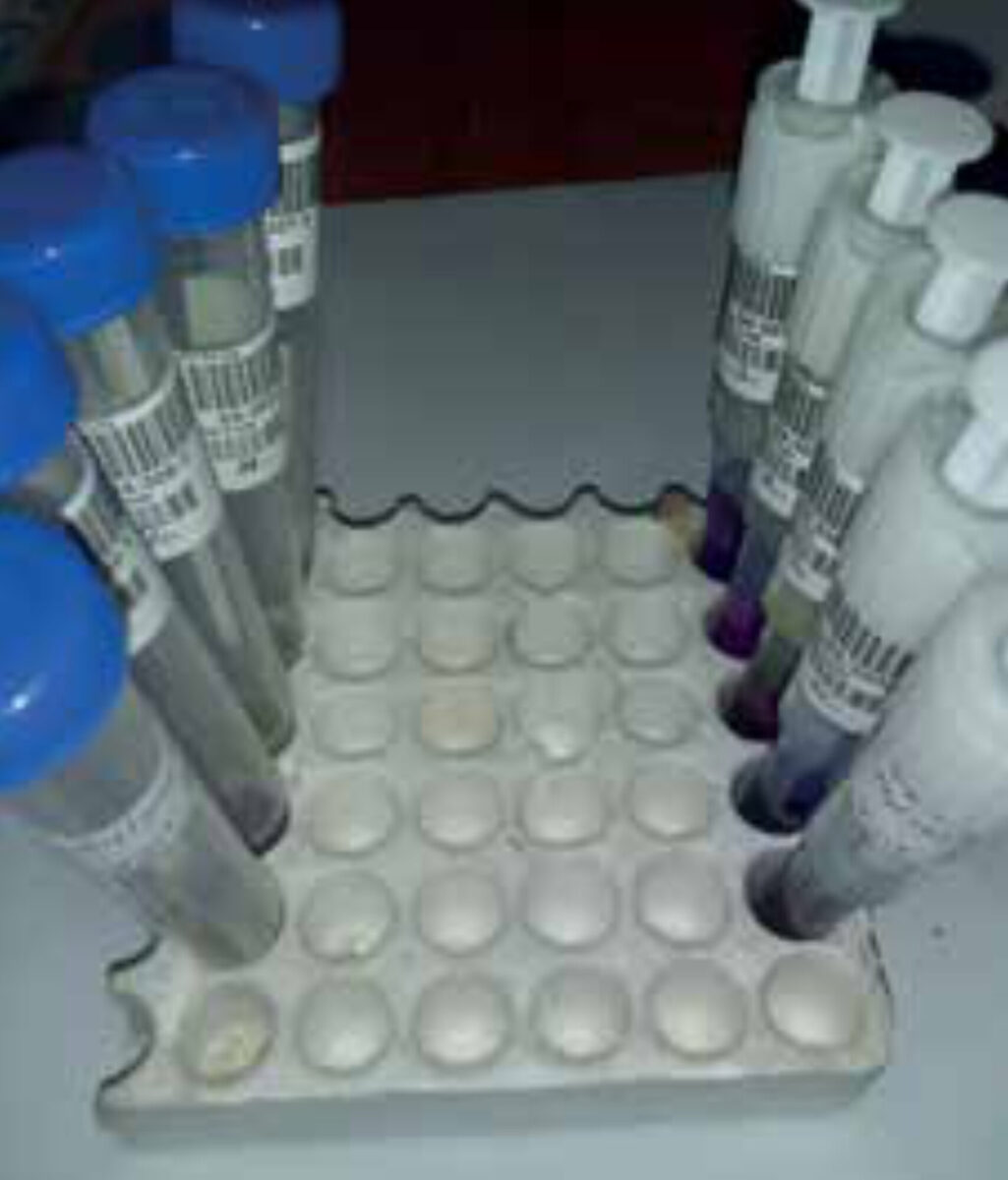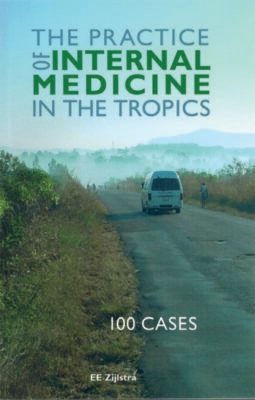Main content
Tuberculosis (TB) remains a significant global health challenge, with an estimated 10 million cases and 1.4 million deaths in 2021.[1] TB preventive therapy (TPT) targeting individuals at highest risk is one of the main interventions aimed at reducing TB burden, particularly in high-burden countries, such as Kenya. TPT reduces the risk of TB among vulnerable individuals by at least 60%, if consistently adhered to. [2] The main TPT regimens include six months of daily isoniazid (6H), three months of weekly isoniazid with rifapentine (3HP), three months of daily isoniazid with rifampicin (3RH) and four months of daily rifampicin (4R). 6H has been used for the longest period, especially among children living with human immunodeficiency virus [HIV] (CLHIV), among whom it remains the preferred regimen according to the Kenya Ministry of Health. [3] However, one of the biggest challenges with TPT has been suboptimal adherence.
Adherence to medication has traditionally been assessed through approaches that estimate the proportion of prescribed pills ingested. However, such approaches have been found by numerous studies to be unreliable. [4,5] Biomarkers that detect isoniazid metabolites in urine are now being used for more objective assessment of adherence to TPT. The scalability of commercially available biomarkers of isoniazid has been limited by their high cost. Less expensive biomarkers, such as a urine dipstick test developed by the University of Washington bioengineering department, are a promising opportunity for more objective assessment of adherence to TPT. [6] A small study that enrolled HIV-exposed infants on TPT suggested that the urine dipstick test performed relatively well compared to the commercially available test. [6] In an article in the journal AIDS, we share the results of a larger (100 participants) longitudinal study that assessed adherence to TB preventive therapy, using a commercially available biomarker that was used as the gold standard for validating the in-house urine dipstick test developed by the University of Washington. [7] Our prospective cohort enrolled CLHIV aged less than 15 years who were currently on the six-month isoniazid preventive therapy (IPT). Adherence to IPT was assessed longitudinally during routine clinic visits by asking caregivers about missed pills and confirmed through testing urine with two biomarkers.
Our longitudinal study was conducted from November 2019 through November 2020. This period coincided with the COVID-19 pandemic, during which non-pharmaceutical interventions (NPIs) were instituted among the general population. The NPIs included travel restrictions, restriction on the number of passengers allowed in public transport vehicles, mask mandates, and advice to the public to avoid crowing, including in health facilities. In response to the COVID-19 pandemic, study sites rescheduled patients on chronic care, giving them longer appointment times. Whereas we had planned to assess adherence at monthly intervals, some of our participants were now scheduled for TPT refills at two-month intervals. We had initially planned to assess adherence using the relatively inexpensive dipstick test at all visits and the more expensive commercially available test at alternate visits. We successfully mitigated the impact of COVID-19 response measures by using two tests concurrently at all visits for patients with two-month appointment intervals, resulting in a median of 3 (interquartile range 3-5) adherence assessments per participant.
This type of study needed consent from parents or caregivers in addition to assent from the children. In general, most caregivers were co-operative, resulting in high consent rates. In a few instances, adolescent children came to the clinic without adult caregivers, complicating the consent process. Nevertheless, we were able to meet our target sample size of 100 children. However, 3 children never returned to the clinic for adherence assessment. Thus, adherence was assessed for 97 children whose results are presented in our peer-reviewed publication. [7]
During routine TPT refill visits, we assessed adherence in two ways. We estimated the proportion of prescribed pills that were ingested by asking caregivers and adolescent children about missed pills. We also conducted urine biomarker testing with the in-house dipstick and the commercially available test at multiple time points longitudinally. Our assessments demonstrated suboptimal long-term adherence to TPT. Only 39% of assessed children had biomarker evidence of TPT ingestion at all time-points, with biomarker-confirmed adherence levels declining over time. This finding was very informative for TB control programmes as it revealed that although TPT uptake among people with HIV remains high, adherence remains modest, thereby limiting its efficacy. Furthermore, a comparison of caregiver reported adherence to biomarker results supported previous reports that caregiver/self-reports significantly overestimate adherence. Twenty six percent of the assessments in which children reportedly ingested their medication had negative biomarker results. These findings further emphasized the need for more objective methods of assessing adherence, such as urine biomarkers, during clinical care.

The causes of suboptimal adherence to TPT among people living with HIV are complex and are categorized into individual, social and structural factors. Individual factors include limited knowledge, mental health, substance use, and physical limitations. Adherence may also be affected by social factors, such as stigma and structural barriers, including complex healthcare systems, medication regimens, and inadequate education.(8) Addressing these factors through targeted interventions and support systems can enhance adherence and improve health outcomes. [8] To maximize the effectiveness of adherence support interventions, it is necessary to accurately identify people who are not adhering to their TPT regimen. The in-house urine dipstick test that we validated in this study is a promising tool for improving the accuracy of adherence assessments in routine clinical settings. It costs less than $1 per test compared to the commercially available option, which commands a price tag of $7 per test. The remarkable performance of the in-house dipstick test (98% sensitivity and 95% specificity) therefore offers a glimmer of hope. The dipstick could be used in combination with other adherence support interventions, such as managed problem solving, to increase adherence to TPT and thereby reduce TB related morbidity and mortality among people living with HIV. [9]
The preliminary findings of this study were shared as an oral presentation during the 51st Union World Conference on Lung Health, 20 to 24 October 2020. The need for daily dosing and the long duration of prophylactic therapy (six months) contribute to inadequate adherence to 6H. Data from this study and others showing suboptimal adherence to 6H has informed current programmatic efforts to improve adherence by introducing short-course TPT regimens. In 2021, Kenya revised the national TPT guidelines to recommend 3HP for all adults regardless of HIV status and 3RH for HIV-uninfected children aged less than 15 years. However, 6H remains the regimen of choice in CLHIV aged less than 15 years. The Ministry of Health in Kenya is also piloting other measures to strengthen adherence to TPT, including digital adherence technology (DAT). DAT entails patients using a unique code printed on their personalized medication packaging to send daily SMS reports of their intake to a dedicated toll-free number, making adherence monitoring more convenient and efficient.
Although several studies, including clinical trials, have suggested that short-course TPT regimens are expected to improve adherence, there is no evidence from real-world settings to support this claim. Following the introduction of the newer short-course TPT regimens, there is a need for more studies to estimate adherence to these TPT regimens. We are planning to conduct a retrospective study to evaluate the performance of the short-course TPT regimens in routine settings compared to 6H. It is currently uncertain if the urine biomarkers can be used to assess adherence to some of these newer short-course regimens with weekly dosing. Urine biomarkers typically detect isoniazid metabolites within 48 hours of ingestion. Although 3HP contains isoniazid, the weekly dosing schedule may make urine biomarkers less useful for assessing adherence to this regimen. In the planned study, we are planning to evaluate the feasibility of monitoring adherence to 3HP using the in-house urine biomarker that we recently validated.
In conclusion, our study demonstrated suboptimal adherence to TPT despite high uptake, with poor concordance between reported adherence and biomarker-confirmed adherence. The in-house urine dipstick test that we validated performed well compared to a commercially available assay, proving to be a promising alternative to relatively more expensive commercially available tests. The dipstick test, in conjunction with other interventions like managed problem solving, could play a key role in enhancing TPT adherence by offering more accurate assessment and facilitating targeted support strategies.

References
- World Health Organization. World Tuberculosis Report 2021. Geneva, Switzerland; 2022.
- Ayieko J, Abuogi L, Simchowitz B, Bukusi EA, Smith AH, Reingold A. Efficacy of isoniazid prophylactic therapy in prevention of tuberculosis in children: a meta-analysis. BMC Infect Dis. 2014;14:91.
- Ministry of Health. Kenya Latent Tuberculosis Infection Policy 2020. In: National Tuberculosis LaLDP, editor. Nairobi, Kenya2021.
- Anderson PLJE. What can urine tell us about medication adherence? 2018;2:5.
- Kendall EA, Durovni B, Martinson NA, Cavalacante S, Masonoke K, Saraceni V, et al. Adherence to tuberculosis preventive therapy measured by urine metabolite testing among people with HIV. AIDS. 2020;34(1):63-71.
- LaCourse SM, Richardson BA, Kinuthia J, Warr AJ, Maleche-Obimbo E, Matemo D, et al. Infant TB Infection Prevention Study (iTIPS): a randomised trial protocol evaluating isoniazid to prevent M. tuberculosis infection in HIV-exposed uninfected children. BMJ Open. 2020;10(1):e034308.
- Onyango DO, van der Sande MAB, Yuen CM, Were J, Mecha J, Njagi LN, et al. Biomarker-confirmed suboptimal adherence to isoniazid preventive therapy among children living with HIV in western Kenya. AIDS. 2023.
- Makanjuola T, Taddese HB, Booth A. Factors associated with adherence to treatment with isoniazid for the prevention of tuberculosis amongst people living with HIV/AIDS: a systematic review of qualitative data. PLoS One. 2014;9(2):e87166.
- Gross R, Bellamy SL, Chapman J, Han X, O’Duor J, Palmer SC, et al. Managed problem solving for antiretroviral therapy adherence: a randomized trial. JAMA Intern Med. 2013;173(4):300-6.



















































